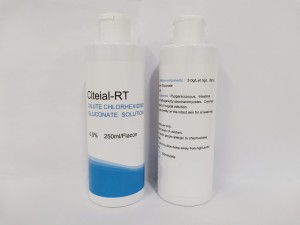TAMPA, Fla. — According to presented results, skin antisepsis for surgical site infection in patients undergoing surgery for an open fracture was effective with both aqueous 10% povidone-iodine and aqueous 4% chlorhexidine gluconate.
“While antiseptic skin solutions of course are an important step to be performed right before surgery, most of the recommendations out there suggest alcohol-based solutions, such as chlorhexidine, should be used,” MD, said in his presentation at the Orthopaedic Trauma Association Annual Meeting. “There are no skin prep trials in fracture patients – certainly not in open fracture patients,” he added.
While povidone-iodine has previously been preferred for traumatic contaminated wounds, he and colleagues in the Preoperative Antiseptic Skin Solutions in Orthopaedic Trauma (PREP-IT) trial set out to test the efficacy of chlorhexidine skin antisepsis in patients with open fractures.
From April 8, 2018, to June 8, 2021, the researchers randomized assigned 1,638 patients (mean age of 44.9 years) to either aqueous 10% povidone-iodine (n = 828) or aqueous 4% chlorhexidine gluconate (n = 810) for surgical debridement within 72 hours of an open fracture injury. The primary outcome measure was surgical site infection (SSI), which included incisional infection within 30 days of surgery or deep incisional or organ space infection within 90 days of surgery.
Slobogean and colleagues found similar efficacy between both antisepsis solutions. Of the 1,571 patients with complete outcomes, SSI occurred in 7% (n = 59) of the povidone-iodine group and 7% (n = 58) of the chlorhexidine gluconate group.
“These results are reassuring – reassuring for your own practice and reassuring for other practice environments,” he said.
“I think that questions some of the transportability of the other prior antiseptic literature that we are basing our practices on,” he added.
Post time: Oct-28-2022





